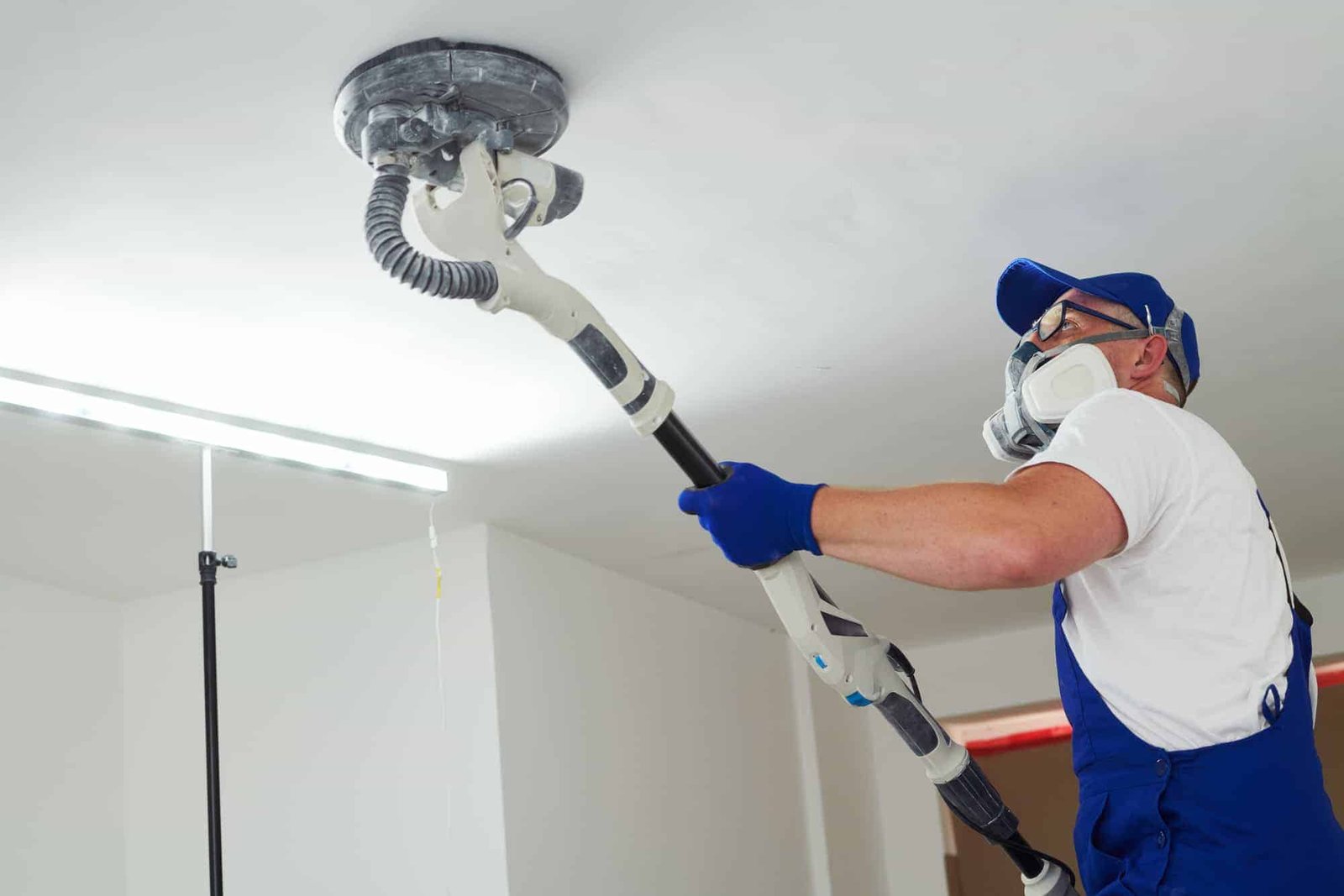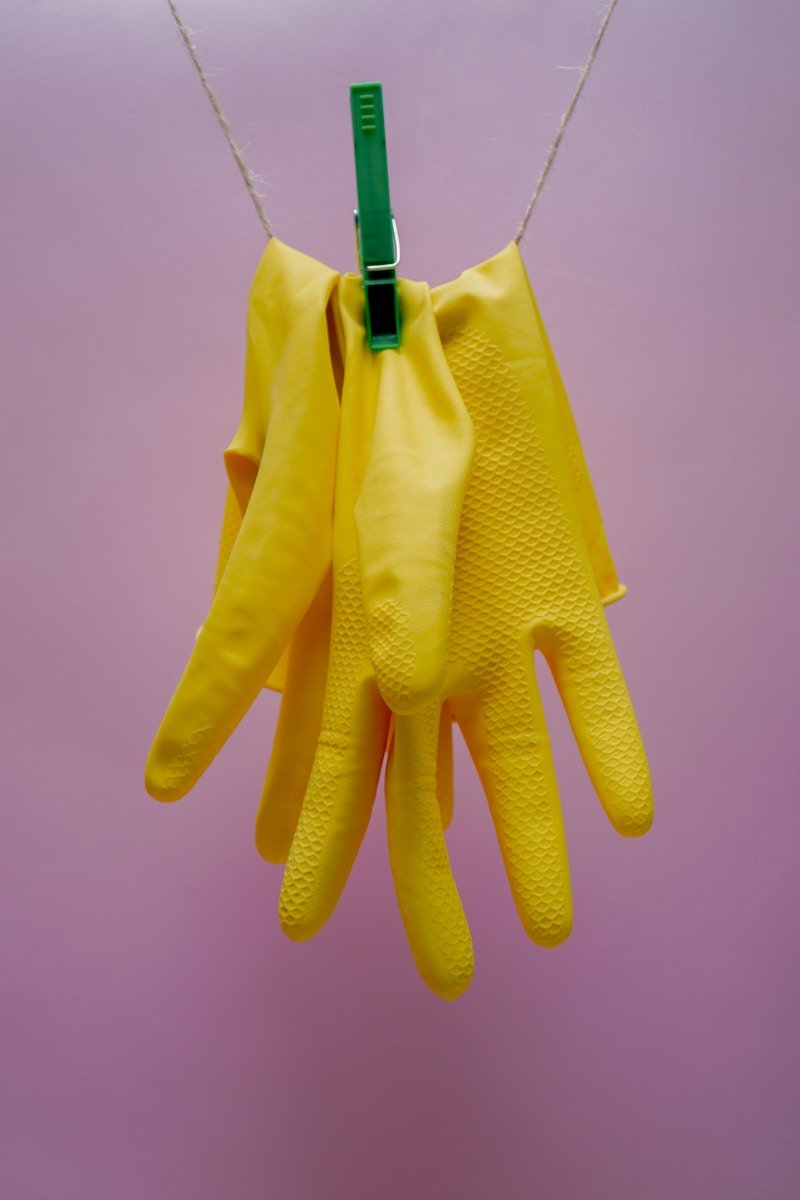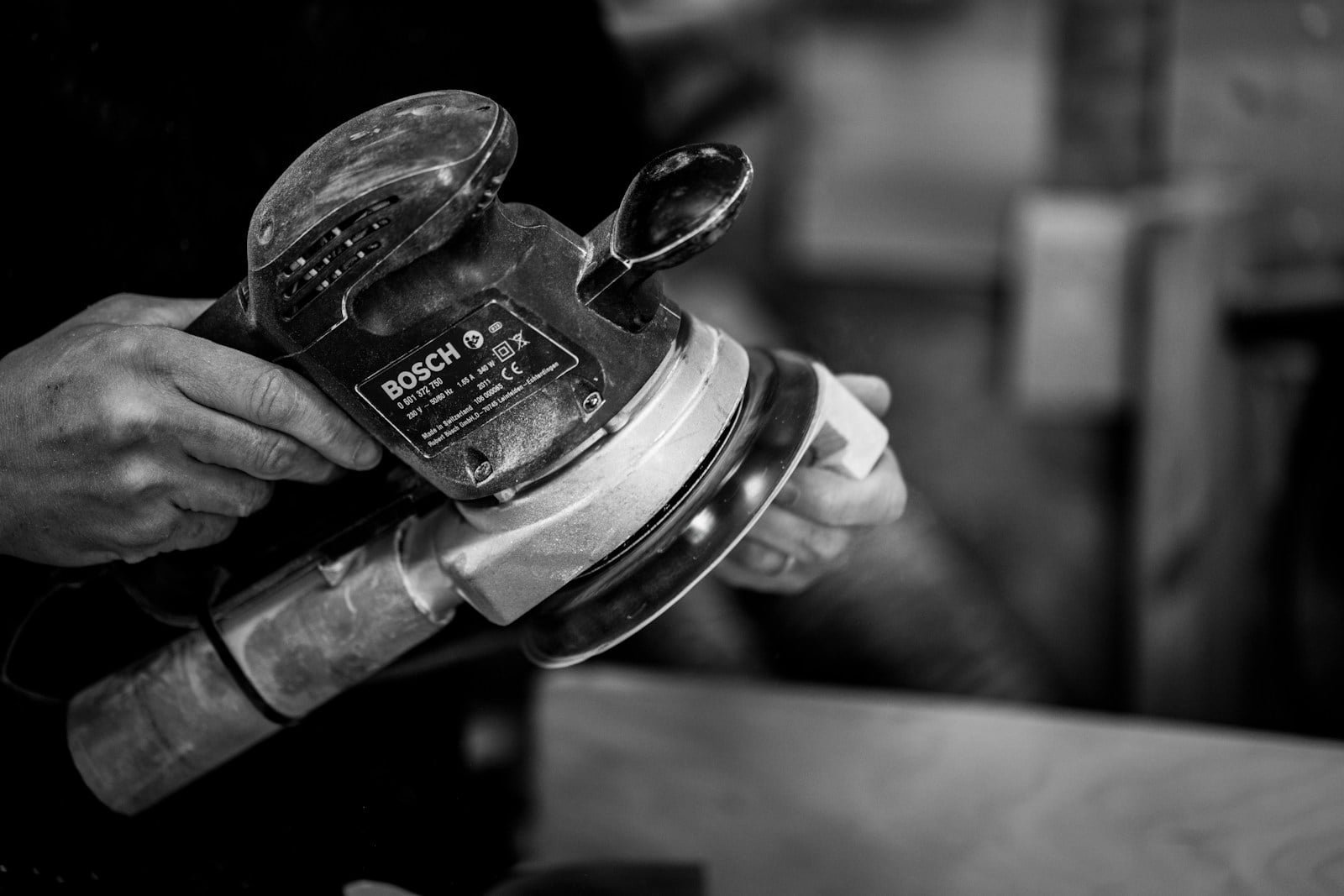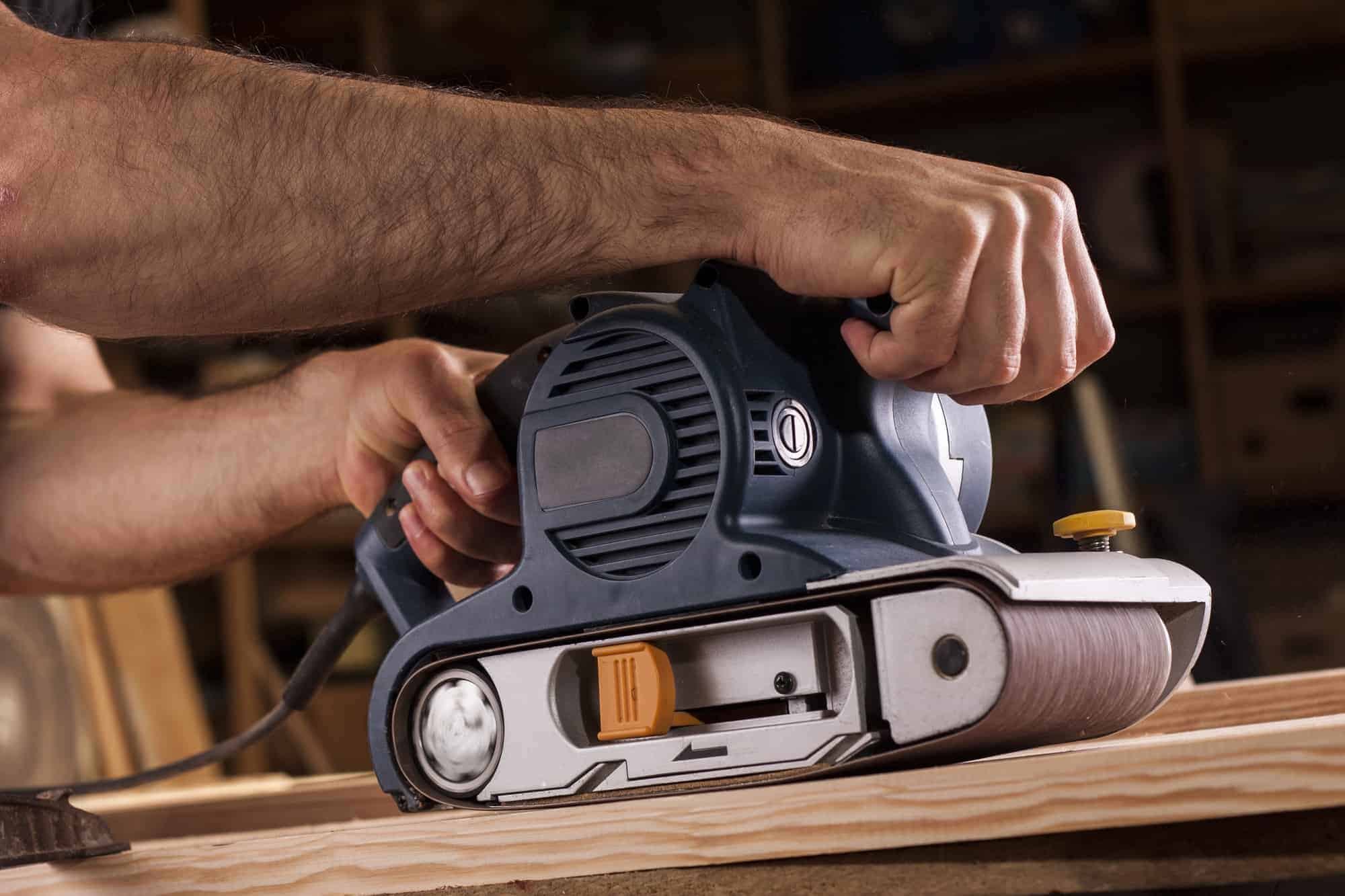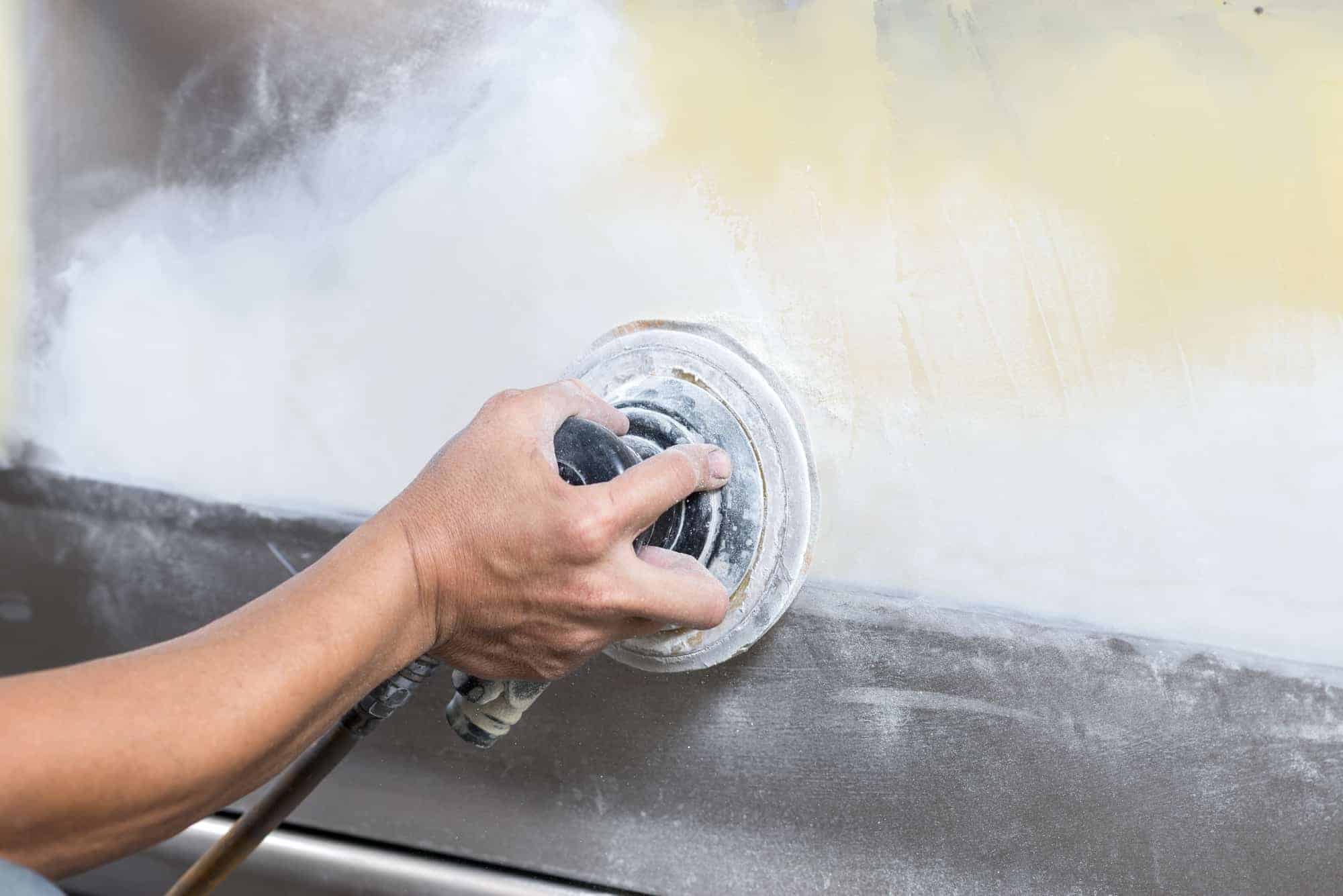Table of Contents
Whether you are a professional contractor or an independent worker, the chances are that you have felt the need to modify your walls while trying to renovate.
In this regard, a key part of this is sanding the walls. This can help with removing the previous plaster or coloring as well as adhesives and other materials.
Sanding walls by hand can be one of the most tedious tasks. Drywall sanders, in this case, can save you both time and energy. There are many different models on the market with different specifications.
Having done several dywall renovations, these are the best drywall sanders in my opinion, to help you in your decision when it comes to buying your own sander.
Quick Comparison
7 Best Sanders For Drywall – Review
Read through the following reviews to find out which are the models that I consider to be the best sanders for drywall renovation and finishing.
My #1 Choice – PORTER-CABLE 7800
This drywall sander is a little longer than 5 feet and weighs somewhere around 9 pounds. As such, it is a lot lighter than almost any other professional-grade drywall sander.
Also, it has an even weight distribution, so you can control it much more easily and pass it evenly without straining yourself. I’m not the tallest guy in the world and I find it easy to use.
It has a pretty good dust collection system as the vacuum’s head steadily sucks in the dust while you work. This may not get rid of all the dust, but it will remove about 90% of it.

Quick Facts
This drywall sander from Porter-Cable is a good all-rounder because most similar tools will have to make a mess to get the job done – and this does a better job than most other available drywall sanders.
However, this drywall sander also falls on the more expensive side. That said, it comes from a reliable brand, its quality is uncompromised, and it will last you a very long time.
Although it is good enough to be used by professionals, both in terms of effectiveness and durability, it is probably a bit too much for someone intending to buy a drywall sander for infrequent use. If you just want one for DIY projects, I’d suggest the WEN (also on this list).
Note that a telescoping handle is absent in this model, but it does have a pretty long reach, and its lightweight feel will allow you to use it on ceilings, and not hurt your back or arms.
PROS
- Incredibly lightweight
- High quality
- Durability
- An effective dust collection system
- Long handle
CONS
- Lack of adjustable handle
- Difficult to fit some extractors to the vacuum hose
My #2 Choice – WEN 6369
This model has the unique feature of being ambidextrous. It has a reversible auxiliary handle that allows left-handed and right-handed users to work with equal ease.
Its speed is also adjustable, which can range from 1500 to 2300 RPMs. This is much higher than in many other models. Hence, this tool is pretty good for stubborn or rough finishes.
Quick Facts
If you need a drywall sander that is adjustable, then this WEN fits the bill. You can fold this up while transporting it, and extend it up to 5 feet when you need to reach high. The head can swivel in all directions. This allows you to access tight spots and corners.
Also, you can change your sandpaper easily due to a hook-and-loop mechanism present in the sanding pad. The sanding disc can cover a lot of area at 8.5 inches.
Another thing I like about this model is that it has an internal dust removal system with a 7.5-foot hose for passing the dust, which can decrease clean-up. It comes with a dust collection bag and two dust hose adapters as well.
The model comes with 8 pieces of drywall sandpaper so you can start working right away. Also, you don’t have to take the trouble of figuring out which grits will be suitable for this model either.
Finally, this drywall sander comes with a very affordable price tag and still gives you the ease of working and relatively good performance. So, this is a pretty good fit for any amateur user or occasional DIY or home renovation enthusiast.
PROS
- Affordability
- Flexible head
- Ease of operation
- Telescopic handle
- Adjustable speed
CONS
- Significant vibrations and wobbling on the longest setting
My #3 Choice – Festool 575219
This tool is high-quality and suitable for professional use. It’s the best drywall sander in its class – but the cost reflects that.
It has two lengths, so you can machine-extend it or quickly and easily reduce it. You can reach up to a high spot effortlessly and get a smooth and even finish.

Quick Facts
This Festool drywall sander is quick and will get your ceilings and walls smooth much faster than other models. The two-speed gears work efficiently for removing material. Also, the trusty drive components transfer power pretty well.
On top of that, this tool is not all that heavy. It has adjustable suction power, which decreases the machine’s weight because the size of its pad is 8-3/4 inches. As you’d expect from a high-level product, this sander has an incredible dust collection system. Unlike most other tools, it is quite reliable, more so if you pair it with a dust extractor of the same brand.
However, this drywall sander is a pretty expensive purchase, which is why it’s best for professionals or those doing many walls. If you are a professional and you wish to have a competitive edge, this might be a very good fit for you.
One major consideration is that you will be able to do cleaning and quick work with this tool. So, even if you consider the extra cost that you will have to bear because of the additional cost of the dust collector, you can get your money’s worth if you use it a lot.
This is also true if you are not a contractor yourself, yet wish to save money by doing your work by yourself instead of paying a lot more to get it done by a contractor.
PROS
- Professional-level performance
- Industrial-level quality
- Excellent dust extraction system
- Efficient and fast removal of material using two-speed gears
- Two different lengths
- Very easy to use
CONS
- Expensive
4. POWER-PRO 2100

This model from Power-Pro comes with an input power of 710 Watts. But more notably, it has a 6-speed motor, ranging from 1000 to 2100 RPMs. Also, it has an extendable handle that goes from 4 to 5.5 feet, making it much easier to access high areas, including ceilings.
Since it is made from very lightweight but strong aluminum and hard plastic, it is not that heavy of a tool despite its high RPMs. So, it can handle a lot of stress, and at the same time will not hurt your back or your arms.
This drywall sander features a unique design on the head that lets it pivot in whatever direction you need it to. This kind of flexibility means that you can reach awkward angles much more easily. The head can move sideways and also forwards and backward.
On top of that, the variable RPMs allow you to set it to your desired speed. For softer materials or fine finishes, you can set your sander to low speeds. For hard walls or faster work, you could go for higher speeds.
One major plus is that you get extra things like a carrying bag, sandpaper discs, and a vacuum hose with this sander, so you could immediately get started. The disc and the sandpaper attach easily due to the easy-to-use, secure Velcro Fasteners.
Overall, this tool is excellent for everyone, professional or amateur. You will be getting outstanding performance for a relatively low price if you buy this one.
Pros
- The adjustable speed can go very high
- Adjustable handle that goes up to 5.5 feet and allows you to do overhead work easily
- Lightweight
- Ease of maneuvering
- Useful extra goodies
Cons
- Comparatively less effective vacuum
- Not low enough RPMs for very soft materials
5. ALEKO 690E

This is one of the best drywall sanders to buy if you’re on a budget. It is a top performer in spite of its affordable price tag, which is a pleasant surprise to a lot of people. The 6 sander discs of different grits and the vacuum hose that can be attached to a dust extractor are included in the price. As the set comes ready, you can get to work immediately.
It works very well right away. The sanding disc comes at 9 inches, covering a lot of space. One downside is that you will face some difficulty in finding replacements for the disc in physical stores. So, you will probably have to buy them online too.
The handle is telescopic, which allows you to reach ceilings and high parts of the wall. However, as this model is a bit heavy, that can prove to be a little tricky. The weight can also make the grip a bit uncomfortable. Therefore, for using this for a long time, you might want to use work gloves.
It does not have a flexible head; so it won’t be straightforward to get into tight spaces or corners. All this considered, it works well enough for a nonprofessional job, especially if you take the price tag into account.
More or less, it is a decent choice for domestic projects. Although professionals might not love the difficulties of reaching the ceilings because of the weight of the model, it remains a great option for using on drywall.
Pros
- Telescoping handle for reaching ceilings
- Affordability
- Availability of 6 sanding discs
- Ease of assembly
Cons
- Lack of low RPM modes for softer materials
- Heavyweight
6. WEN 6362

WEN is a pretty well-known brand, and this sander of theirs comes at a good price. At 9 pounds, it is pretty lightweight. To add to your comfort, it has an adjustable handle to reach up to 5 feet. So, reaching high parts of the wall and ceilings should not be an issue.
It also has a pivoting head – easily the best thing about this model. It can swivel in every direction so that you can put it against any surface with ease. Tighter spots and corners are covered pretty well because of this feature. If you have an intricate job to do, with walls featuring built-in curves or alcoves, this is a good buy.
Likewise, you can use the Velcro for attaching the sanding discs, which makes life easier for you. As it comes with sandpapers of 6 different grits, you can immediately dive into the work. This also means you will not have to worry about which sandpapers will be good to pair with this model.
They give you a few sanding pads to use, which is a good thing. This is because these sanding pads are not standard. As such, if you try to look for them in a hardware store, you will have a pretty difficult time. The hook and loop base of the pads make changing sandpaper easy.
This WEN also has an automatic system for dust removal, and the 15-feet hose makes clean up faster and easier.
Lastly, this may not be the absolute best model on this list, but it still is good enough for occasional use. This is especially true because of its lower price as many infrequent users may not want to spend a lot of money on a drywall sander.
Pros
- Outstanding value for money
- The flexible head which allows you to cover the surface easily
- Lightweight
- Telescoping handle up to 5 feet
- Ease of changing sandpapers
Cons
- The difficulty of getting additional pads
- Quick wearing out of sanding discs
7. ALEKO DP-3000

This sander has been designed to sand floors, walls, and ceilings to remove residue, adhesive, etc. One thing that it does have special is its adjustable speed, ranging from 800 to 1700 RPMs. While this doesn’t go as high as many other models, the lower limit is suitable enough for soft materials.
It can be used independently but also has a vacuum cleaner attachment. You will have to buy that separately. But this attachment is actually a large dust bag. You will have to sling that over your shoulder, which can prove to be frustrating.
Similarly, this model has a hose included in the set as well as 6 sanding discs. You should look for the replacement discs for this model before you buy it. This is to make sure that your sander is not rendered useless once you have used up the given discs.
There is an attached light with this model for additional visibility. Nevertheless, a downside is the instruction manual that comes with it since it is not fully in English. Therefore, assembling it could be difficult.
All in all, this is not the best option on this list. But if one is careful about researching a few things about the model before buying it, things could work out. If other models are not available for some reason, or one does not want to spend a lot of money, you could go for it.
Pros
- Extra light
- Adhesive removal
- Suitability of usage on floors
- Adjustable speed
- Availability of low enough RPMs for soft material
Cons
- Frustrating dust management system
- Ineffective user manual

Buyer’s Guide
There are few things to be considered before you buy a drywall sander such as:
What You Need to Know Before Buying A Drywall Sander
Purpose
You need to think about the number of times you’ll use it, location, versatility, etc. because these things will be impacting your buying decision more than anything. Once you figure out what you will be doing with a drywall sander, you can understand the required specifications for your tool.
One-off projects will probably mean you need to buy a budget drywall sander, rather than a pro model.
Weight
This factor is one of the most important. The weight directly impacts how long you can use the tool without experiencing fatigue. You should consider whether you will be using it on ceilings or high parts of the wall.
Also, how heavy your sander should be will depend on the level you want to work at. Professional-level and frequent usage will require a heavier model.
If you’re a slim build, this might be more of an issue and you should look for a lightweight model.
The Type of Sandpaper to Use
Not all types and sizes of sandpaper are appropriate for your drywall sander. You will have to bear in mind that it is not wood that you are sanding, and as such, different rules will apply.
Joint compounds used these days are modern and very lightweight. Therefore, heavy-grit sandpapers are not necessary to sand drywalls.
If you do use sanding screens or coarse-grit papers on these soft joint compounds, it will leave many unnecessary sanding marks and look ugly. To avoid this, you should choose sandpaper very carefully. 120-grit or 150-grit sandpapers are pretty safe bets for drywall.
Likewise, you should also look for precut sheets so that they fit your hand sander for any finer detail.
RPMs
The tool will be a bit heavier and harder to control if you choose a drywall sander with higher RPMs. So, consider how much power you need in your tool for the level you want to work at.
Sanding Discs
The size of the sanding discs will play a part in your experience with the sander. Make sure you buy a sander for which you can easily get sanding disc replacements. Most of these are sold online.
Flexibility
You should choose a model that has a relatively flexible head and covers enough area. This will make your work easier if you’re not working with straightforward, flat drywall surfaces.
FAQ
Q. Can a drywall sander be used for plaster?
Yes, but first, you must clean the surface. Then you have to figure out what kind of sander is suitable for the said surface. If the plaster is just slightly uneven, a block hand sander can be good enough. But you will need an electric sander for surfaces that are too rough.
Q. Is drywall dust dangerous for you?
Prolonged exposure to this dust is harmful. The compounds found in drywall include talc, mica, calcium, gypsum, and silica. They have been associated with nose, throat, eye, and respiratory tract infections. You should always wear a mask and safety goggles.
Q. Is a power sander suitable for sanding drywall?
Yes, it is. But hand sanders are recommended by most experts because you require more caution and even pressure for power sanders. You also have to spend very little time on each area as drywall is pretty thin.
I hope this has helped you pick the best drywall sander for your needs – and don’t forget to check out my palm sander recommendations for those parts these sanders don’t reach.






